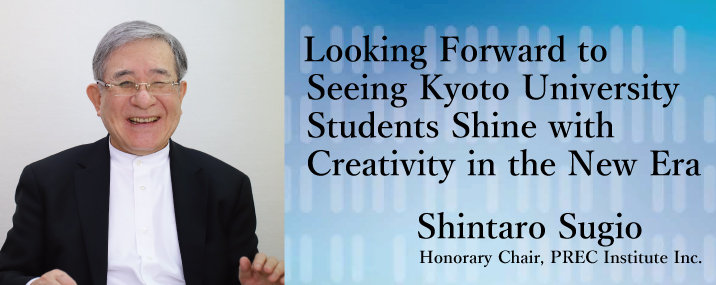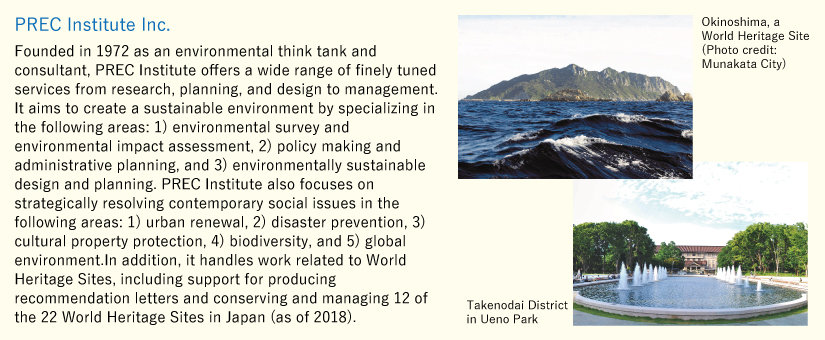Vol.11 Interview with Donors

Shintaro Sugio
Born in former Keijo City in 1937. Graduated from Kyoto University's Department of Forest and Biomaterials Science in the Faculty of Agriculture in 1960. Founded PREC Institute Inc. in 1972, after working in the National Park Department of the Ministry of Health, Labour and Welfare, Kagoshima Prefecture, and the Environmental Agency. Has served as President of the International Federation of Landscape Architects (IFLA) Japan, Vice Chairman of the Japan National Committee of the International Council on Monuments and Sites (ICOMOS), President of the Japanese Society of Landscape Architects, and Vice Chairman of the Cultural Landscapes Committee of ICOMOS IFLA.
Q What were your days at Kyoto University like in the late 1950s?
They were very busy. Since I lived in Senriyama, Osaka, my commute was very long. However, in my second year, I switched from Uji campus to Yoshida campus, which gave me some time to spare. So, I first joined the school's symphony orchestra and then founded a contract bridge club. In addition, I hosted a number of Kansai Student Landscape Architecture Conference meetings and established a student-organized seminar titled "Town Design Group" for discussing city planning. Subsequently, one of my teachers who had heard of my startup skills asked me for help in starting a shooting team, which required carrying out procedures for purchasing rifles. While I already had a tough time managing five organizations, being poor--as was the entire country back then--required me to endure extra hardship to somehow buy myself an instrument. At the time, asking graduates for donations was not an option, so we raised money little by little by holding dance parties.
Q Did you find the experience helpful in starting your business?
My experience of recruiting helpers and raising funds was certainly useful, but what helped me more were the connections and credibility given to me as a Kyoto University graduate. My company offers consultation services on World Heritage Sites, which it started providing thanks to an opportunity I was given by one of my college upperclassmen. The University's network of graduates also supported me in becoming a member of the UNESCO World Heritage Committee.
On the other hand, a number of things that I took up in college continue to enrich my life and have become my treasures. After turning 80, I restarted playing the flute, which I used to play in my college symphony orchestra. Some of my friends have also chosen to enjoy their lives after retirement by playing their old instruments. About 30 years ago, I applied my experience with the flute to learning to play the Noh flute, and have subsequently begun offering Noh flute lessons to children at the Yoyogi Hachimangu Shrine. I also serve as chairman of the Yoyogi Bayashi History Preservation Association, which is an Intangible Folk Cultural Property designated by Shibuya Ward. In addition, although I used to be a terrible dancer back when I was raising money by holding dance parties, thanks to my wife, I have been practicing dancing for the nearly 20 years. I also participate in official contract bridge tournaments.
Furthermore, having not only studied landscape architecture in college but also worked in the industry, I regularly publish papers on the profession.
Thinking about all the experience Kyoto University gave me and how it has helped me throughout my life and work just deeply moves me.
Q 「How were you able to develop the foresight half a century
ago to start a business that specializes in dealing
with environmental issues?
I was inspired by a news broadcast about then-President Nixon responding to widespread public concern over environmental pollution by founding the United States Environmental Protection Agency in 1970. Subsequently, while reading through some documents issued by the U.S. government, I learned that environmental assessments were required for public works and immediately decided to introduce this concept to Japan. In addition, in the 1980s, when I learned that countries overseas were beginning to build zoos that kept their animals in environments closely resembling their natural habitats, I also immediately contacted an architect to import this concept.
Therefore, instead of considering myself as having had some foresight, I would say I kept a lookout for hard-to-spot opportunities and applied the activeness that I developed at Kyoto University.
Q Lastly, is there a message you want to leave
Kyoto University students with?
Succeeding in the Reiwa era, a time when development and peace are hoped for, will require creativity. In other words, it will be a good time for Kyoto University students, because they can display their strengths by demonstrating their unique creativity. While creativity cannot be easily taught through education, it is something that can be cultivated in Kyoto, a place with rich nature and history. I hope that Kyoto University students know that society expects them to create new things and look forward to seeing them succeed in the new era.
(Interviewed in March 2019)


